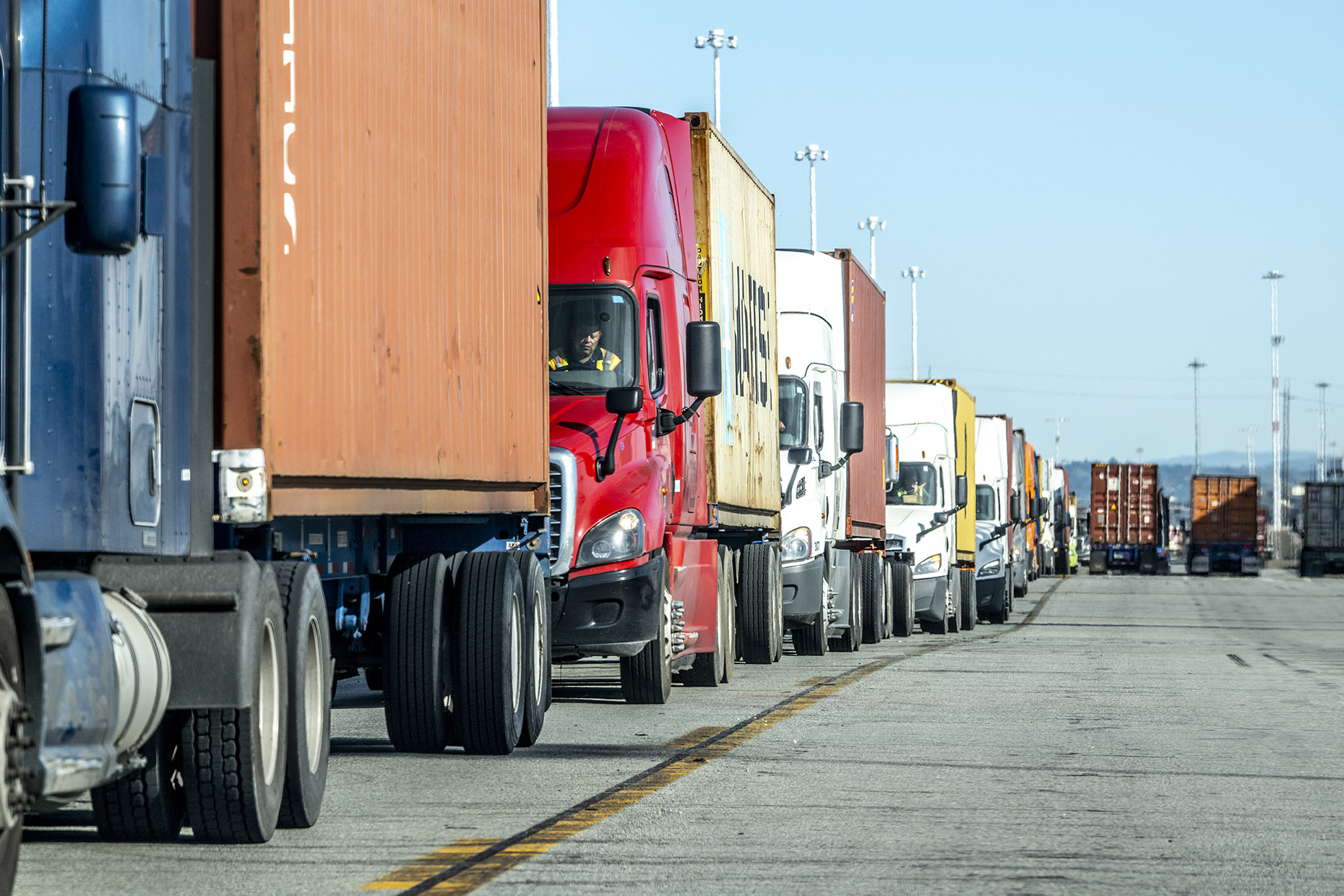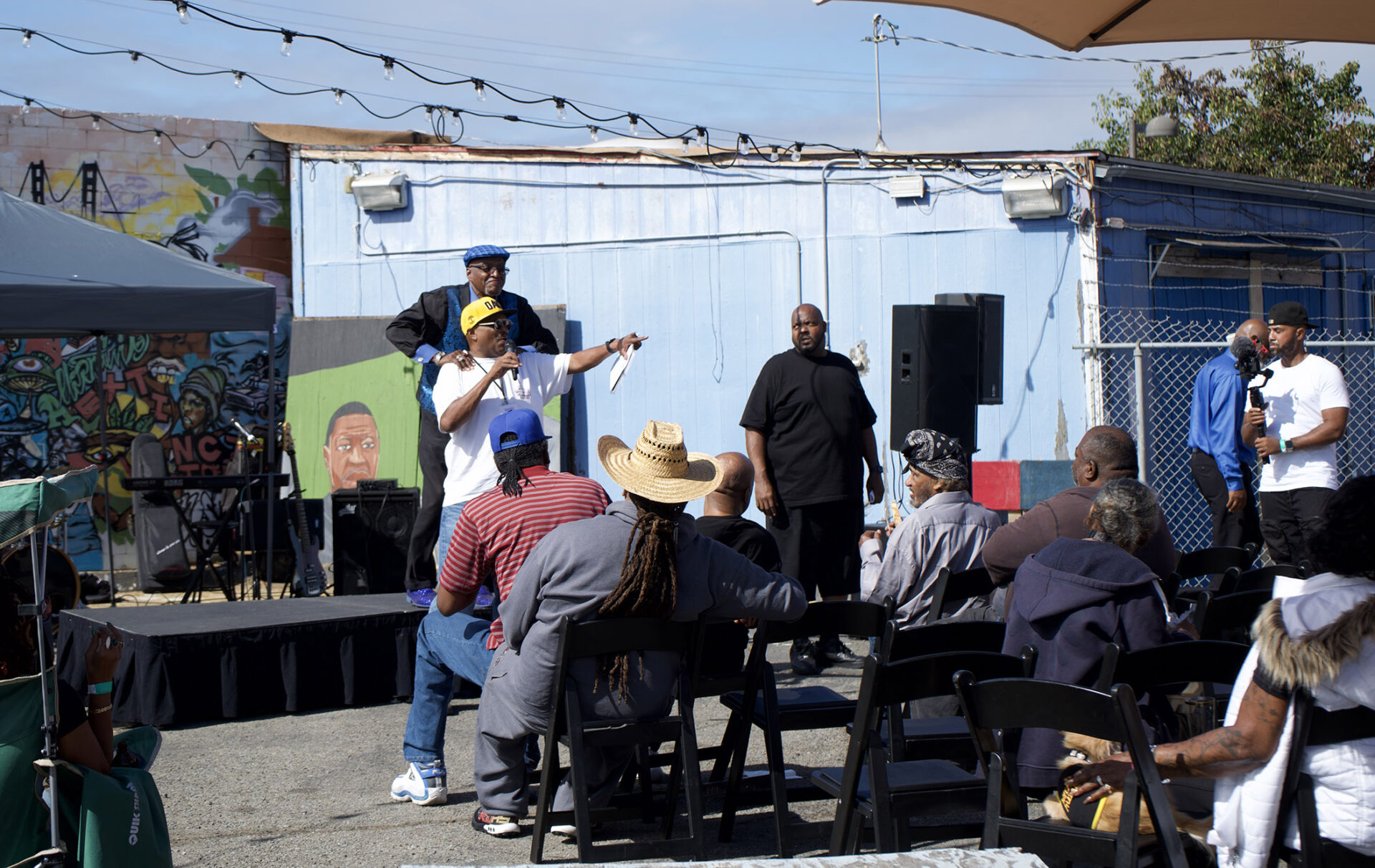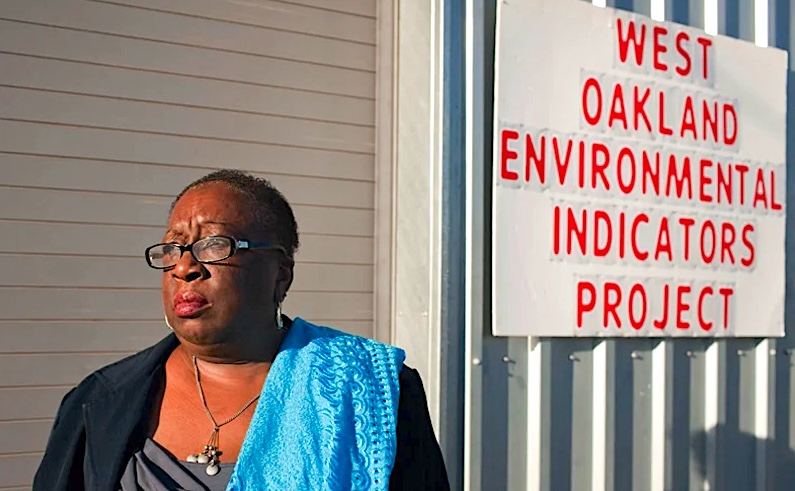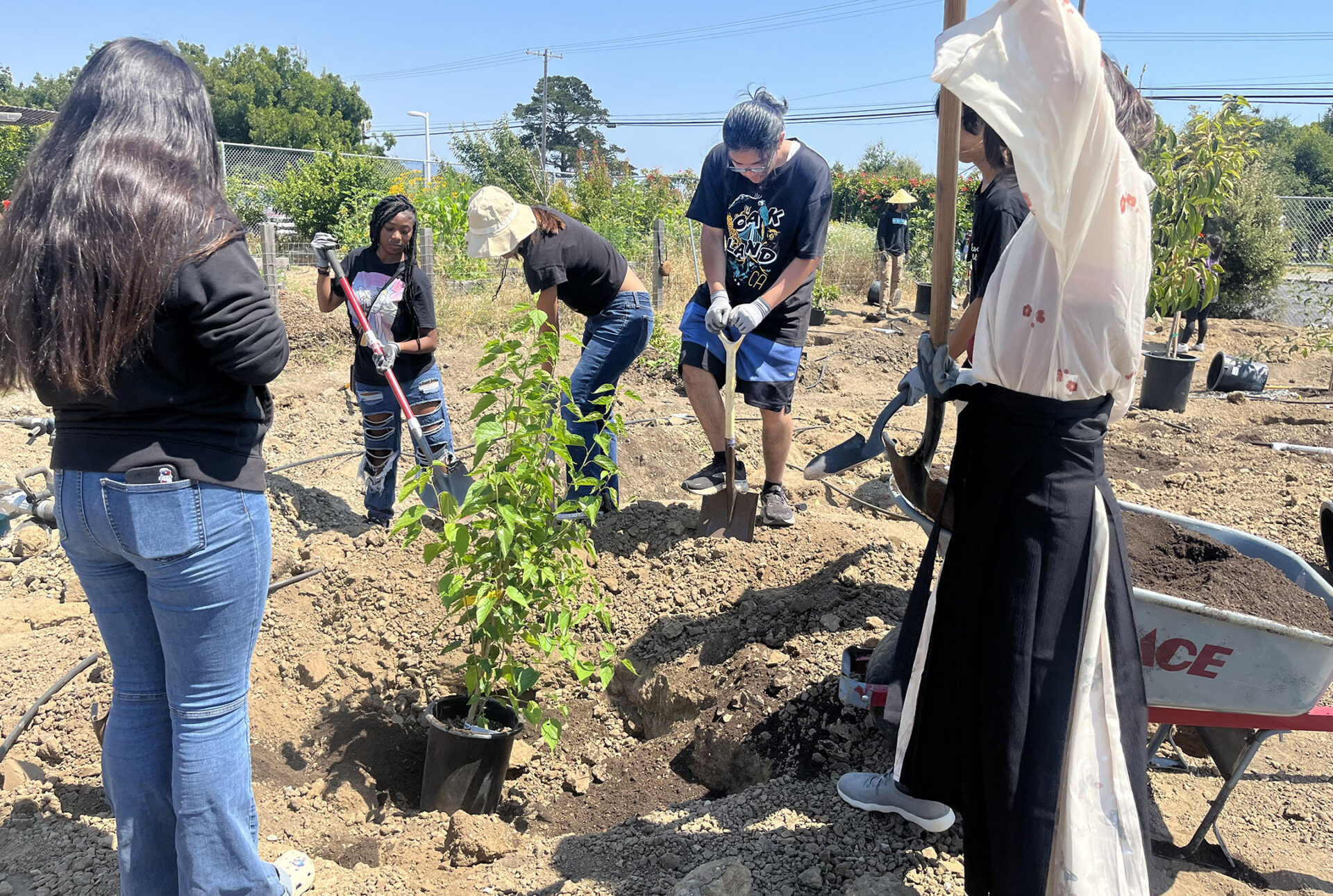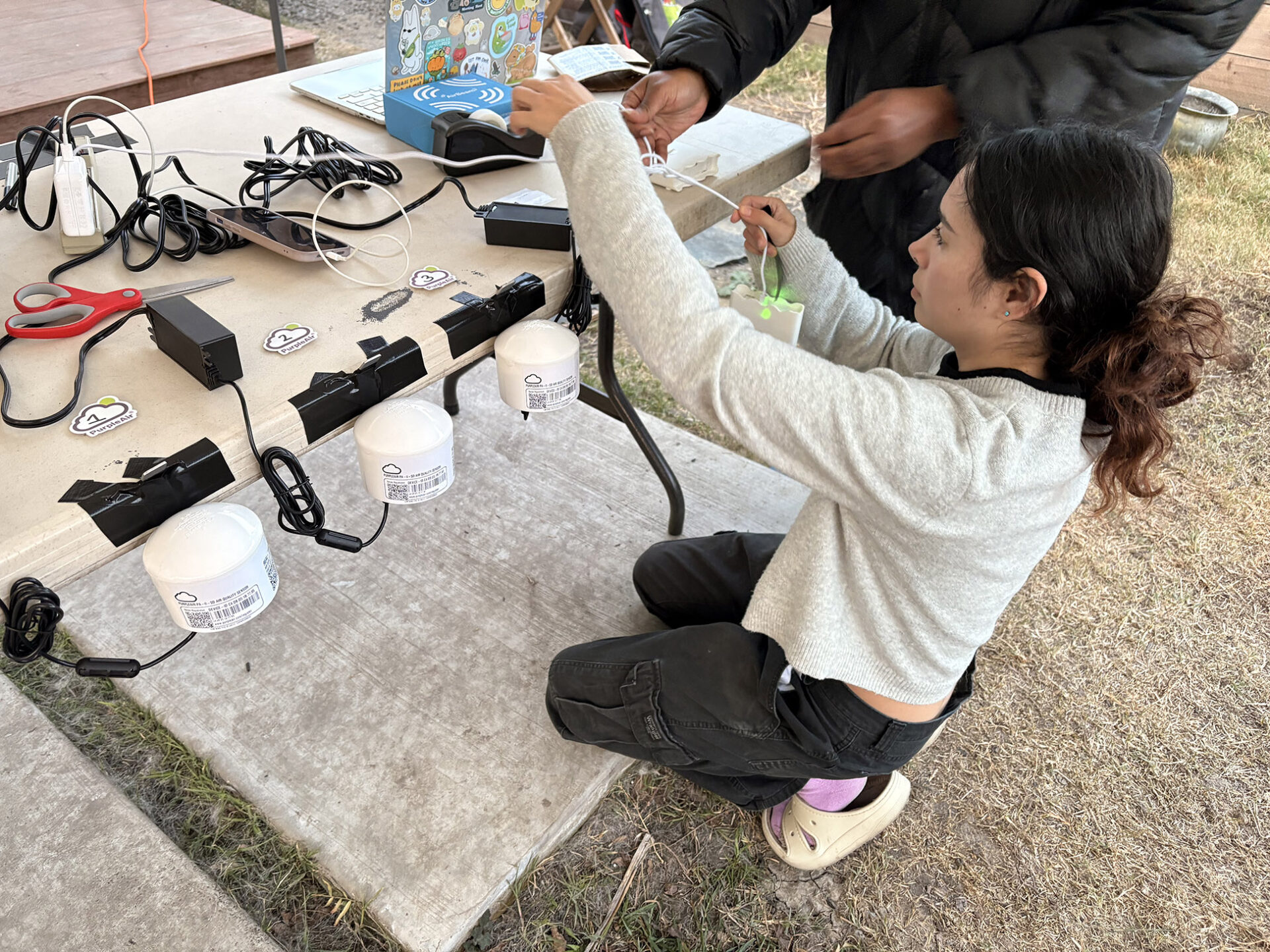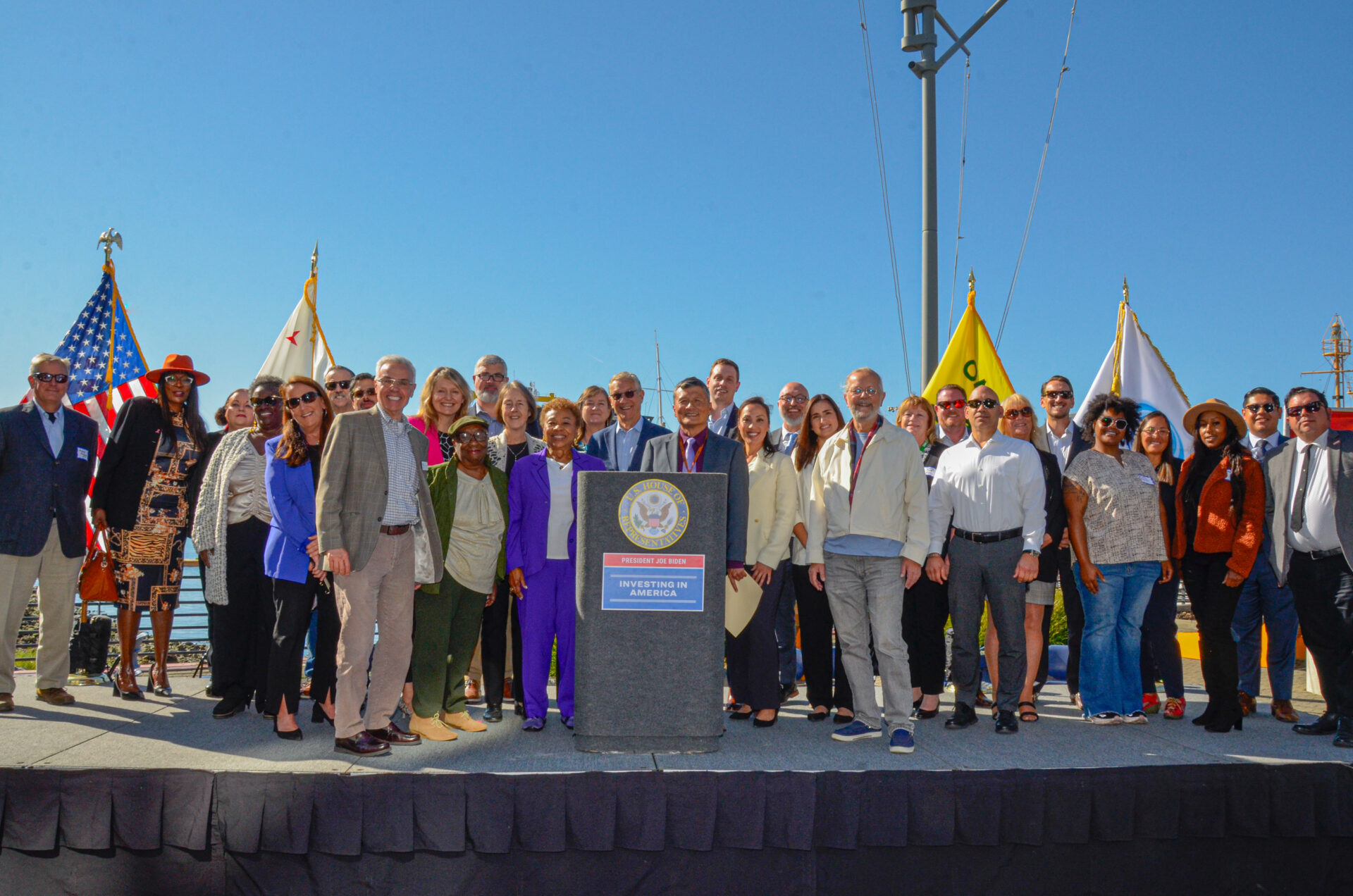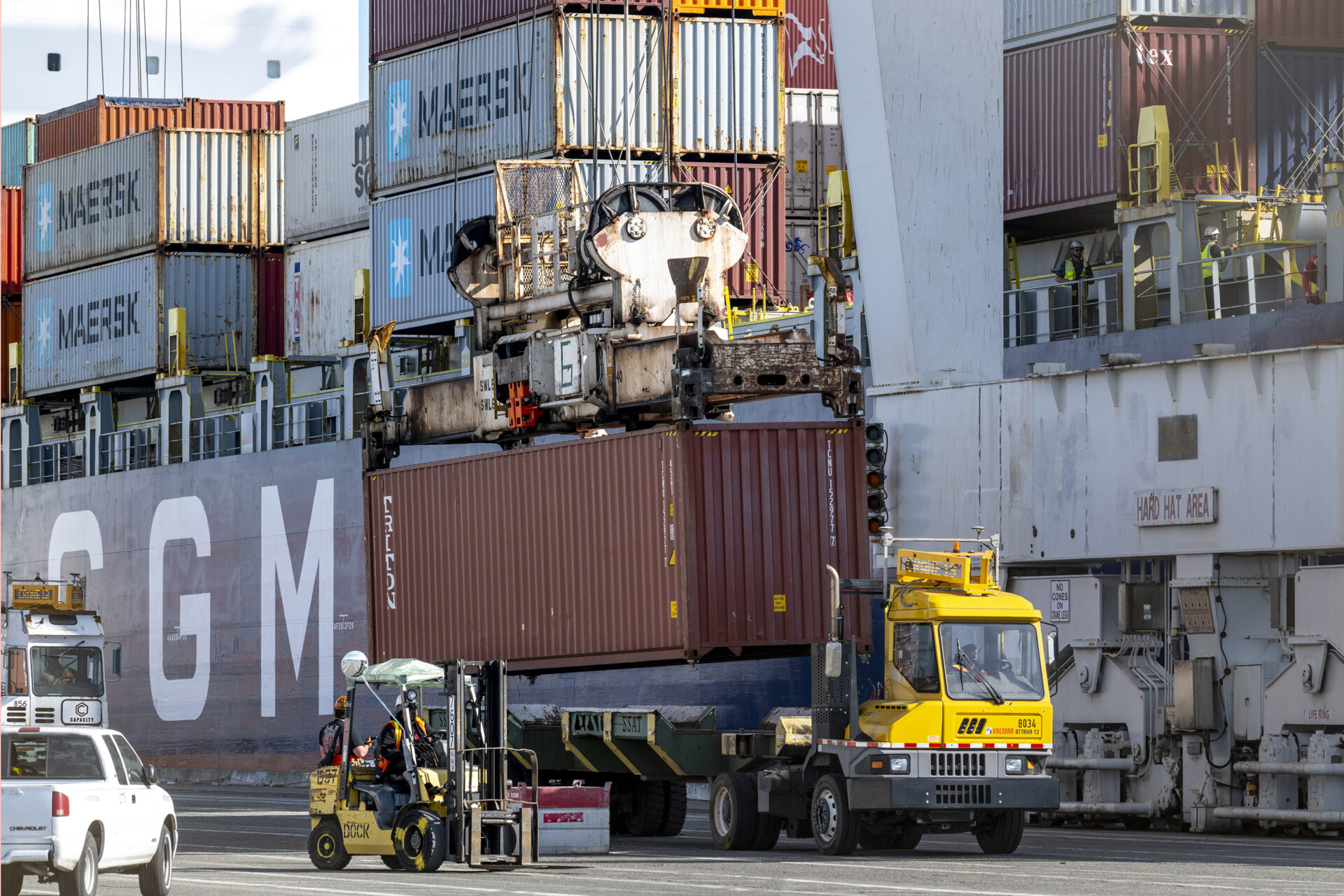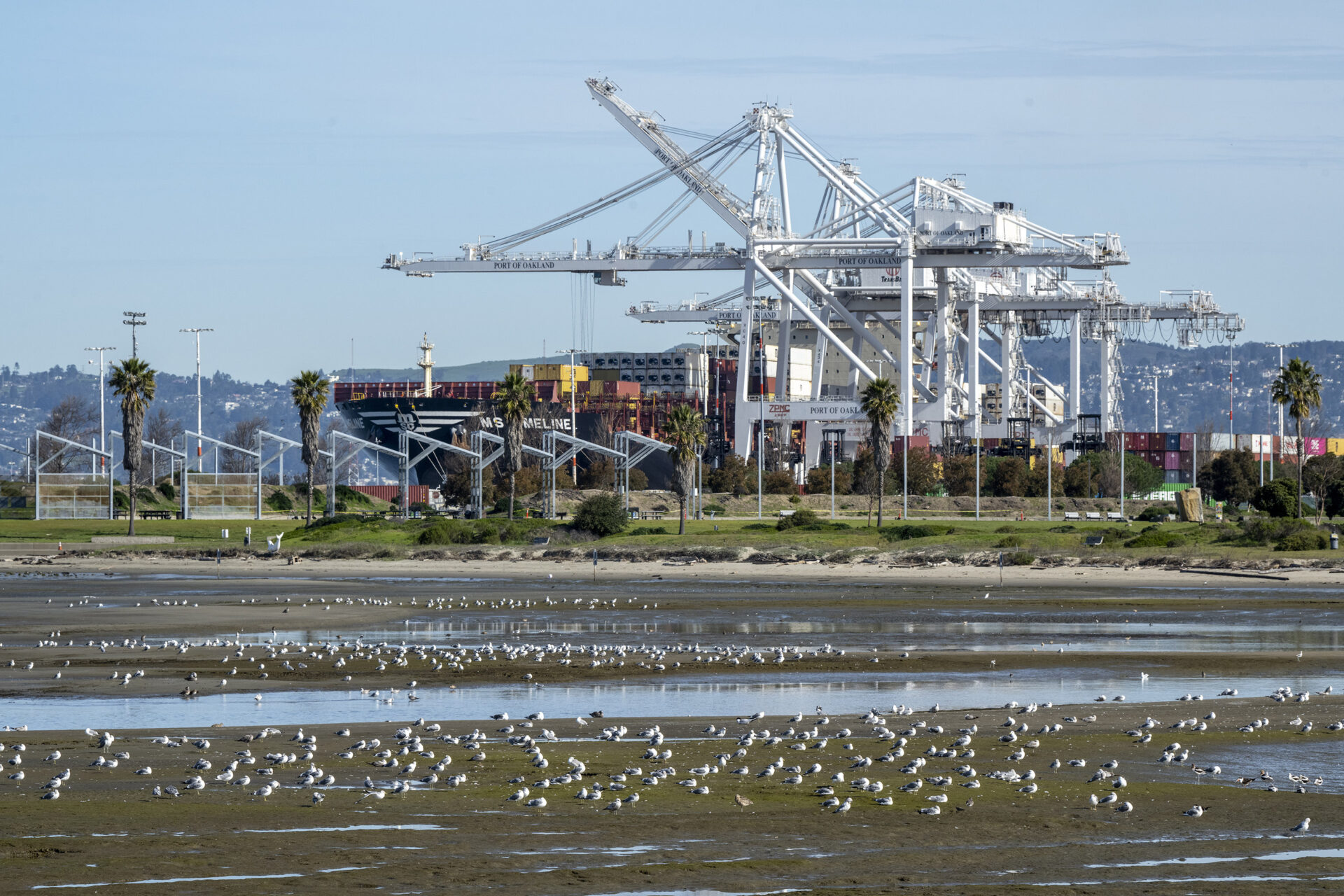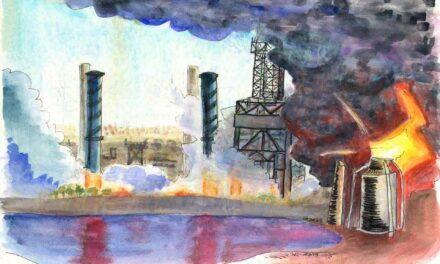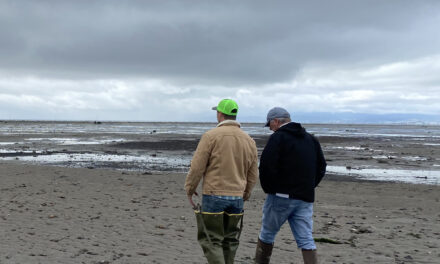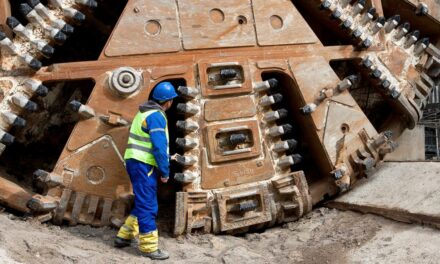Photo: WOCAN
In Uncertain Times, the Port of Oakland Goes Electric
When you’re in West Oakland, the port’s vastness is hard to grasp. Its full scale only reveals itself from afar. But for West Oakland residents like David Peters, the 1,300-acre industrial giant is less seen than felt, through the pollution that it leaves in the air. “It is nasty, right? You feel it, you’re breathing, you feel it on your skin,” he says. The Black communities neighboring the port have fought for decades for their right to cleaner air. Now that dream is within reach. In October, the U.S. Environmental Protection Agency awarded the port a $322 million grant to transition its cargo handling operations to zero emissions. Matched by the port and local partners, the total investment will be close to half a billion dollars, all flowing into green, sustainable energy. “This is an amazing opportunity for the port to take responsibility for the environmental pollution they’ve been doing to the neighborhood for a hundred years,” says Peters.
Extremes-in-3D
A six-part series of stories in which KneeDeep Times explores the science behind climate extremes in California, and how people and places react and adapt.
Supported by the CO2 Foundation and Pulitzer Center.
FULL READ
In Uncertain Times, the Port of Oakland Goes Electric
For much of David Peters’ childhood, the Port of Oakland was invisible. It’s hard to imagine how a 1,300-acre industrial giant could hide from a West Oaklander, but like the sun, it wasn’t that it was out of sight, but that it was too overwhelming to look at directly. Peters just saw the hundreds of trucks cast from its docks rumbling through his neighborhood, and remembers the blasts of diesel exhaust that hit his face as he rode his bike. “It is nasty, right? You feel it, you’re breathing, you feel it on your skin,” he says.
When you’re in West Oakland, the port’s vastness is hard to grasp. Its full scale only reveals itself from afar. From the 880 freeway, from San Francisco, from the Richmond Bridge — the farther you move away, the more vessels, cranes, and stacks of multicolored containers emerge. In West Oakland the port is barely seen. In West Oakland the port is felt; and for most residents, that feeling comes from the pollution that it leaves in the air.
“My contact with the port was through the trucking traffic,” Peters recalls. “My experience was the pollution, particularly the off-site pollution, but never really connecting that to the port.”
Photo: Karl Nielsen
The Port of Oakland’s surrounding Black communities have fought for decades for their right to cleaner air. Now that dream is within reach. In October 2024, the U.S. Environmental Protection Agency awarded the port a $322 million grant to transition its cargo handling operations to zero emissions. Matched by the port and local partners, the total investment will be close to half a billion dollars, all flowing into green, sustainable energy. This effort will reduce the more than 69,000 tons of yearly greenhouse gas — the equivalent of burning more than 160 Statues of Liberty’s weight in coal — emitted by drayage trucks, cranes, forklifts, and tractors.
It will be the largest federal investment to date in cutting emissions from seaport operations in the Bay Area. As part of the EPA’s Clean Ports Program, launched under the 2022 Inflation Reduction Act, the grant came with a mandate: community engagement at every stage of the electrification project, from planning and design to execution and outreach. That’s why David Peters got the call. It was early 2024, and the Port of Oakland wanted him on board. He had founded the West Oakland Cultural Action Network four years earlier to uplift the cultural, economic, and social conditions of three Oakland neighborhoods (Hoover, Clawson, and McClymonds). He saw a rare, once-of-a-kind chance.
“It was like, ‘Hey, we got this amazing grant, but it’s due in two weeks. Can you fill the stuff out? I’m like, are you kidding me? No way,’” he recalls. “But it was too big of an opportunity to pass up.”
Peters speaking at West Oakland event for neighbors. Photo: WOCAN
EXTREMES-IN-3D
A seven-part series of stories in which KneeDeep Times explores the science behind climate extremes in California, and how people and places react and adapt.
Series Home
Click here to enter
Part 6: Infrastructure
Part 7: Aftermath
Supported by the CO2 Foundation and Pulitzer Center.
And he didn’t. He knew what was at stake, and filled out the forms. He knew how pollution disproportionately affected Black Oaklanders in the flatlands, where life expectancy is 11 years shorter than that of their white neighbors in the hills. He knew this project wasn’t just about cleaner energy; it was also about justice.
“This is really an amazing opportunity for the port to take ownership and responsibility for the environmental pollution that they’ve been doing to the neighborhood for a hundred years,” he says.
Today, WOCAN is one of the four community-based organizations working hand in hand with the Port of Oakland to inform residents about the effort to electrify heavy-duty trucks and tractors that haul containers. For the port, this consolidates a chapter that began to be written more than a decade ago, when they started making decisions with the community. Matt Davis, the Port of Oakland’s chief public engagement officer, calls it part of the port’s “evolution.” He says the port has realized the importance of having “an honest two-way dialogue” to address the environmental and social impacts of moving goods. “We’ve seen over the years that it’s actually critical for the port to have some strategic input into how we can mitigate some of the negative effects of the goods movement,” Davis says. “And really lift up some of the positive impacts through workforce development.”
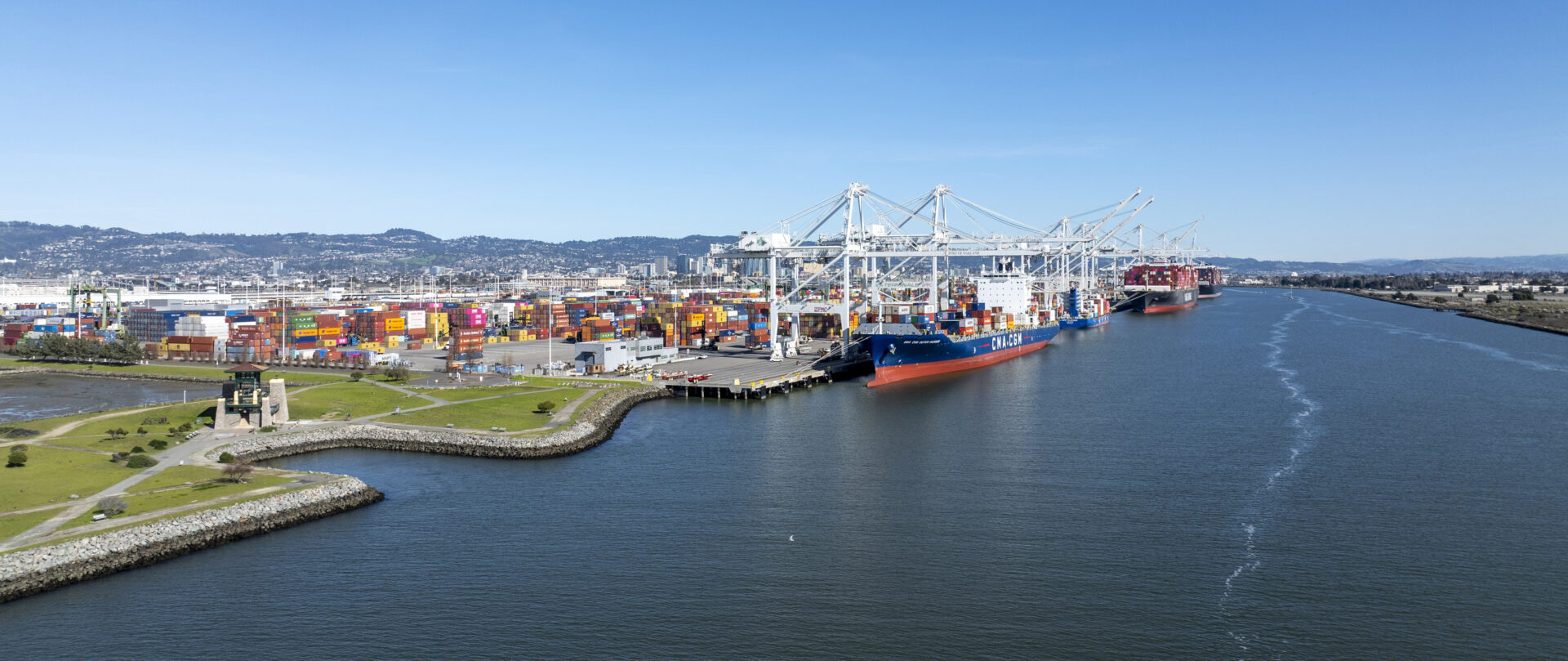
Since Donald Trump’s second inauguration, the EPA has frozen thousands of dollars in environmental funding across the Bay Area. But the Port of Oakland’s clean air and electrification project has so far avoided those cuts; and for now, remains on track.
The Road to a Cleaner Port
Ms. Margaret Gordon, a longtime environmental and social justice activist, says it took her just a minute to understand the pollution problem in West Oakland. It was 1992, and she had just moved into the neighborhood. One day, while researching the causes of why so many children in West Oakland were sick, she visited Prescott Elementary School. There, she noticed shoeboxes filled with the names of all the children who had asthma.
That, she says, really sparked her interest. According to a state survey, one in five children in West Oakland has asthma, and they are seven times more likely to be hospitalized for it than children anywhere else in California. There was something, something particular about West Oakland, that was making them sick.
Margaret Gordon. Photo: Earth Justice
For over a century, West Oakland has been the Bay Area’s industrial hub. Its population swelled in the 1860s when it became the final stop of the Transcontinental Railroad, leading to the construction of the first wharves that would become the modern seaport. The port expanded, becoming an official city department in 1927 and later serving as a military base during World War II. The 1960s completely changed the face of West Oakland: the federal government built a massive U.S. Post Office distribution center, the port embraced container shipping, and the state carved up the neighborhoods with freeways, ringing West Oakland in concrete and exhaust.
Convinced that pollution was directly linked to illness, Ms. Gordon co-founded the West Oakland Environmental Indicators Project. Over the next two decades, she mapped air pollution and its toll on residents’ health, while pushing and pushing for cleaner air. Her work laid the foundation for research confirming what West Oaklanders had long suspected: the neighborhood’s elevated rates of asthma and cancer are tied to the toxic air they breathe.
Asthma, says Mykela Patton, associate director of the Rose Foundation’s New Voices Rising program, affects families both in terms of their health and their wallets. “If you’re in high school and you have asthma and you always have to go to the emergency room, you’re missing school, and your parents are maybe missing their jobs,” Patton says. “It adds to the kind of educational and economic barriers that shape our communities.”
Kids from Oakland neighborhoods plant air-cleaning trees during a recent summer academy of New Voices Rising. Photo: Rose Foundation
In 2009, Ms. Margaret Gordon had another epiphany — this time, not in Oakland, but on the other side of the world. She had been invited to visit the Port of Rotterdam, the largest in Europe, which was already taking steps to cut its emissions. She was dazzled by the electric ships and the cranes that spun on their axes to place containers directly onto trains bound for cities across Europe. But what struck her most was the absence of a community suffocated by the port’s operations.
“That was just like bells, whistles, balloons, and confetti for me,” she says. “To be able to go back and talk about seeing this port that was not polluting the community, compared to what was happening in the United States. I had never seen that before. It was eye-opening.”
When she returned, she began pushing the Port of Oakland toward green energy. It would take a few more years for the port and Gordon to be on the same page. The port had been working on reducing its emissions since the 2000s, but a major milestone came in 2012, when it launched a shore power system that allowed ships to plug into the electric grid and turn off their diesel engines, cutting their biggest source of greenhouse gas emissions and bad air. But the bigger leaps came later.
New Voices Rising staff setting up air quality monitors. Photo: Rose Foundation
Gordon remembers how, early on, when she began collecting air quality data in the 1990s, the port staff was “so arrogant, and none supported the science or the data showing the harm they were causing by being so close to people.” Over the ensuing years, the leadership of the port dramatically changed.
“[By] 2016, five to eight people who had been there when I started had retired,” Gordon says. “All the new people who came in were willing to sit and negotiate these new changes for the electrification.”
These efforts culminated in the port’s 2019 emissions reduction plan, which laid the foundations for the 2024 project to electrify cargo-handling operations.
The Port Goes Electric
The Port of Oakland began reaching out to community-based organizations to discuss its electrification plans in 2023. Besides WOEIP and WOCAN, the port partnered with the Rose Foundation for Communities and the Environment and Black Cultural Zone, two organizations with previous work in West and East Oakland.
“You have major thoroughfares that run [trucks and equipment] through East Oakland as well,” says Carolyn Johnson, Black Cultural Zone’s CEO. “I was born and raised in East Oakland and suffered as a child from asthma. Poor air quality affects us in East Oakland as it does in West Oakland.”
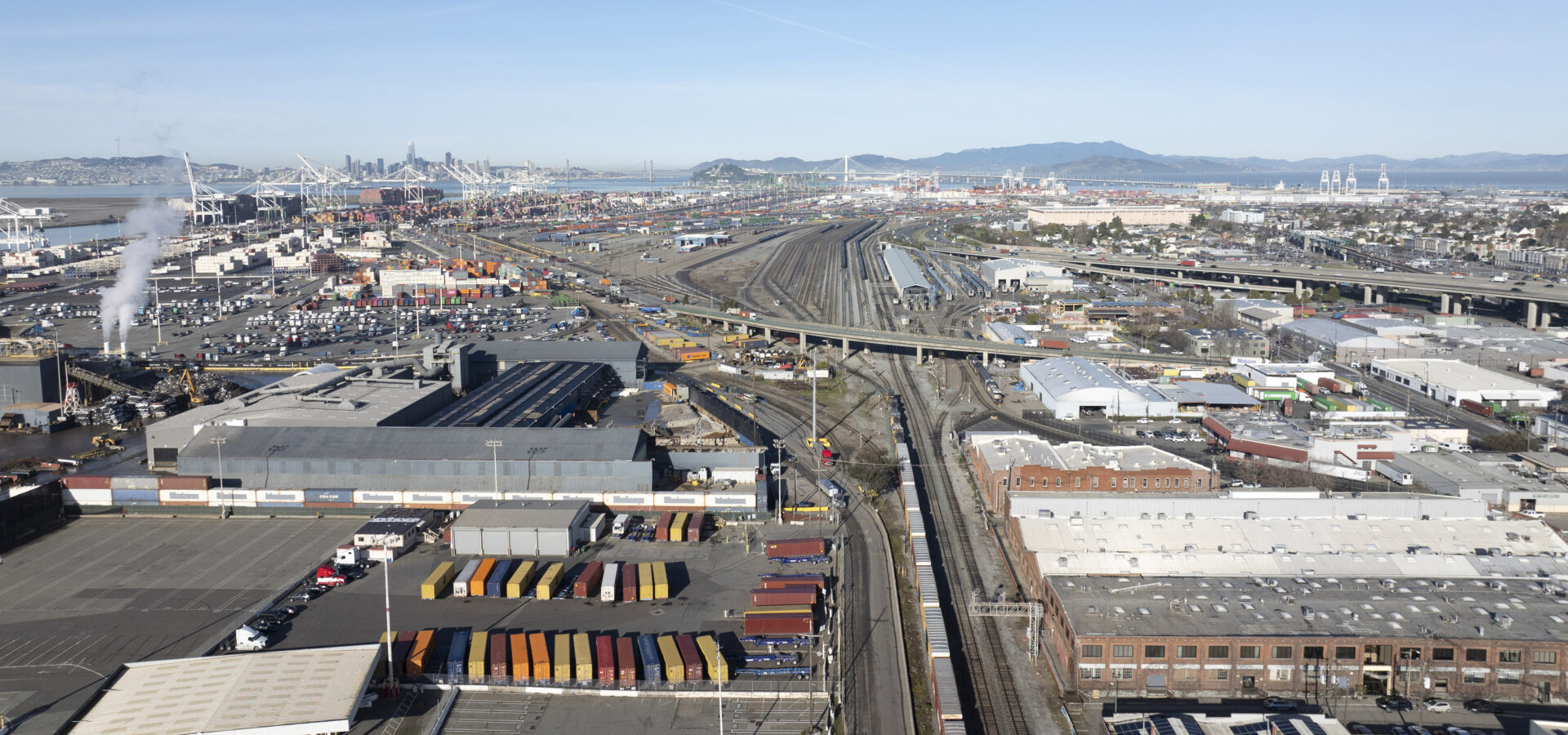
In those early meetings, the port and its partners — including some of its tenants — agreed on where to focus their electrification efforts. Tim Leong, the port’s senior maritime projects administrator, says they prioritized forklifts, yard tractors, and other cargo-handling equipment because they are one of the sectors responsible for the highest emissions. They also focused on trucks, as they impact the nearby communities.
“The trucks, ironically, are not the sector with the largest diesel emissions because California’s clean fleet, truck, and emissions rules are so stringent, but they’re kind of omnipresent,” Leong says.
With the $322 million EPA grant, the Port of Oakland will acquire, over the next four years, 475 drayage trucks and 188 pieces of zero-emissions cargo handling equipment, including 118 yard tractors, 57 forklifts, eight electric top-picks, four reach stackers, and one rail car mover. The port estimates that these upgrades will prevent 226,000 tons of greenhouse gases, the equivalent of taking 52,000 gasoline-powered cars off the road for a year.
To support the new equipment, the port will also upgrade key infrastructure by installing 213 charging stations, six battery energy storage systems, and a solar array.
Charging the equipment can take up to four hours — far longer than fueling. With the terminal operating 16 hours a day, the crucial window for recharging is the quiet stretch between 3 and 7 a.m. California’s new normal includes public safety power shutoffs during extreme heat or wind. “If there’s a shutoff during that core charging time, you may not be able to operate the terminal during the next shift,” Leong says. “That’s why we need to build more resiliency and reliability into the port’s grid.”
Beyond the air quality benefits, many in the Oakland community see something deeper in the electrification project: a chance to engage with one of the key institutions that has shaped West Oakland’s history. As David Peters puts it, it’s a way to begin healing “some of the generational neighborhood trauma when we weren’t able to affect these institutions.”
“Yes, electrification is absolutely valuable,” says Johnson from Black Cultural Zone. “But I actually think one of the bigger things in this project is engaging the community, activating the community, letting their voice be heard; and them understanding that their voice is valued.”
The Port of Oakland is the main entry point for nearly all waterborne goods moving through Northern California. In January 2025 alone, over 80,000 20-foot containers arrived at its docks, and were then moved onto trucks and rail cars to supply the West; more than 64,000 containers, packed with American-made goods, were shipped out. The port’s Tim Leong says the plan isn’t just to modernize, it’s to grow. That means a massive increase in electrical demand. And for that, Leong says, the port is “in ongoing discussions” with the local utility provider, PG&E, as well as making preparations in its own backyard.
“We’ve been upgrading our substations realizing that for any number of different reasons, more electrified equipment, more plugs, larger vessels, larger cranes — these are all going to require additional upgrades of our electrical infrastructure,” says Leong. “We need to make sure that we’re able to do that.”
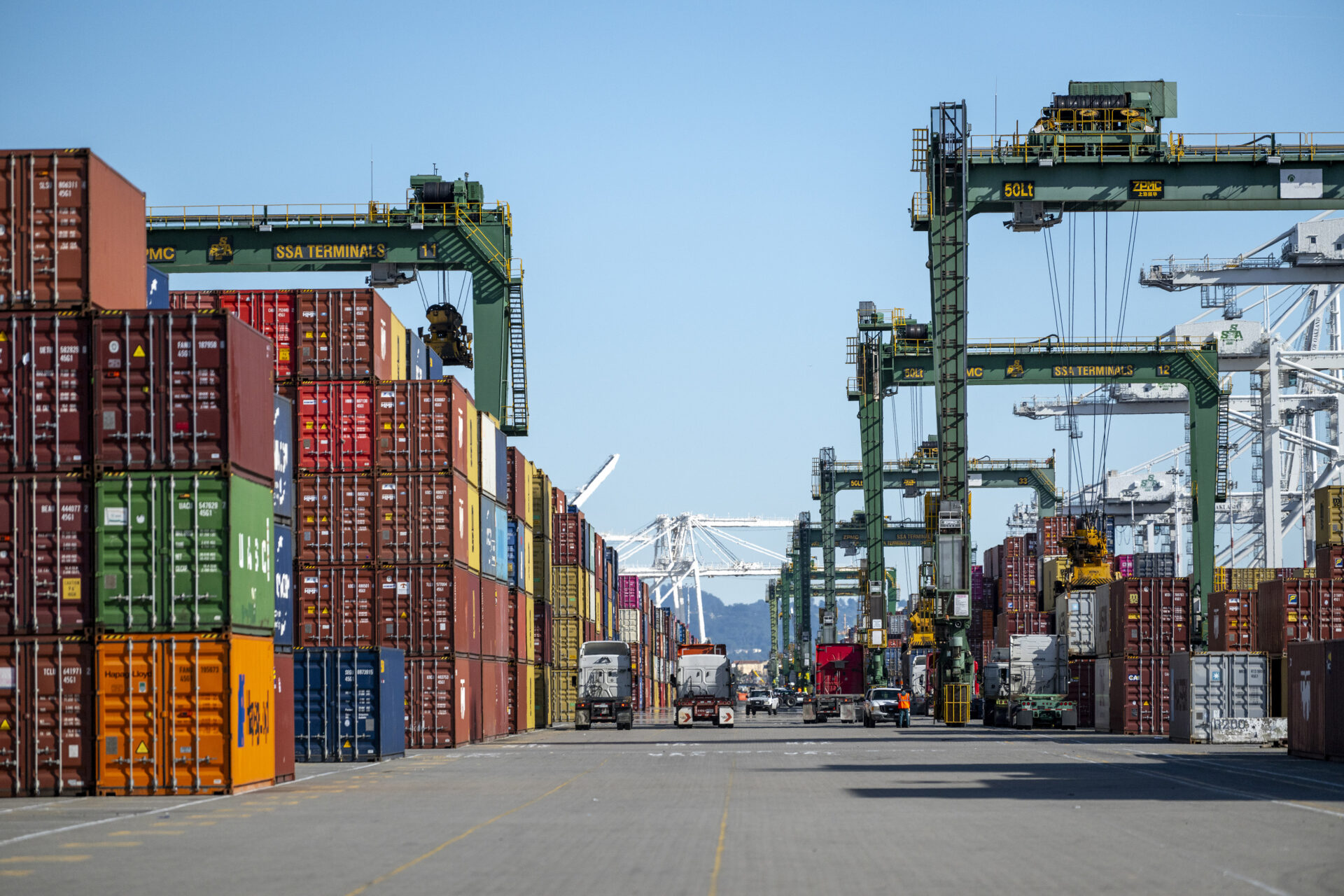
The port currently handles ships carrying 4,000 containers, but these are fast being superseded by bigger vessels (up to 13,000 containers) that need more power while in port. Photo: Karl Nielsen
Another component of the project is workforce development. The port, according to its own estimates, creates more than 98,000 direct jobs in Northern California, and supports as many as 500,000 if you count the rural Central Valley farming sector, whose products are sent to Asia through Oakland’s docks. As part of the electrification effort, the port is partnering with Pacific Maritime Association, Machinists’ Institute, and West Oakland Job Resource Center to train workers on operating electric equipment. The port will also open 300 new jobs, 87 of which will go to local residents, half of them from disadvantaged communities.
The four community organizations will lead outreach and engagement efforts, each bringing its own strengths to the table. Besides community engagement, the Rose Foundation and the West Oakland Environmental Indicators Project — both with environmental expertise — will monitor air quality. WOCAN will focus its outreach in West Oakland, while the Black Cultural Zone will cover East Oakland.
“This is a very complex and immersive strategy of engagement that has to go beyond just, ‘Hey, we did a workshop, seven people signed up, gave us their email, let’s move on,’” says Johnson, who, like most of her neighbors, knew nothing about local nonprofits and environmental health initiatives until she got involved in the business. “The average guy on my block, on 4th and 14th Street, they don’t know. And so, until Johnny at the corner knows about vehicle electrification and can speak about that clearly, we haven’t done our job.”
Orwellian Times
On his first day in office, Donald Trump said that “climate extremism has exploded inflation and overburdened businesses with regulation,” and rescinded 63 Biden-era executive orders, including one that reinforced the federal government’s commitment to environmental justice. What followed was a sweep of the EPA. Communications were halted. Nearly 200 employees working on environmental justice were placed on leave. The agency’s new director canceled more than 400 environmental justice grants worth $1.7 billion.
In West Oakland, the news hit like an earthquake.
“You know, when it was first announced that Trump was going to stop disbursements of all grant awards, I was like, ‘Are you kidding me?’” recalls Peters from WOCAN. “Oh my God, wait. This is over, right? Before it even began.”
Port clean air and energy project launch event. Photo: Rose Foundation
At the Port of Oakland, the Trump administration’s actions raised concern. But by late January, port staff felt reassured that the EPA would follow through on the $322 million grant awarded just three months earlier. Matt Davis says that the port had already submitted reimbursement requests tied to the grant and had been paid. “So that’s a good sign,” Davis says.
The port has also begun executing sub-grant agreements with its partners and has assured the community-based organizations that the project is moving forward.
Still, the tide of clean energy projects we’ve seen in the last years has begun to recede. Even California has felt the chill of the federal rollback. In early January — before Trump officially took office — the California Air Resources Board withdrew its pioneering plans to gradually retire diesel trucks and trains, anticipating that the new EPA would refuse to approve them.
For some companies operating at the port, the move was a major blow to electrification efforts. Mark Menezes, owner of PTI, a company specializing in bulk transfers, cross-docking, secure warehousing, and managing overweight containers, says CARB’s retreat made it harder to commit to electrification.
“Right now, it’s not the time for electrification. If you’re paying double for your vehicles and installing a huge infrastructure on your property, while everyone you’re competing with is doing it for less, you’re not going to make any money,” says Menezes. “If there were funding for this, it would be ok, but right now there isn’t.”
Photo: Karl Nielsen
Despite CARB’s rollback, other port tenants continue to support the project. Forum Mobility, a heavy-duty truck charging infrastructure provider, remains a key partner and a vocal supporter of the transition. Executive Vice President Adam Browning says electric truck technology is still in its “early stages of development,” and it needs incentives, such as those the port is giving, to make it economically viable.
“It may be cheaper now to run trucks on diesel. But our goal is to flip that script and build the technology that will deliver not just a cleaner product but a cheaper product,” he says, adding the goal stands with or without incentives.
The Port of Oakland remains committed to making electrification happen, and is prepared to defend it if necessary. “This grant has been executed, it’s been obligated, it’s been appropriated by Congress to the agency,” says Davis.
Oakland’s decarbonization efforts align with a broader shift in maritime innovation, as the rest of the shipping world is closing in on a net-zero emissions framework. This April, the International Maritime Organization approved a new fuel standard for ships and a global pricing mechanism for emissions, a huge step towards the transformation of the world’s merchant fleet.
Middle Harbor Park, built in 2004 by the port for the community, offers local residents and waterfowl bayfront access within the port footprint. Photo: Karl Nielsen
As global, national and California policies shift, the port is nonetheless moving ahead “with a measured approach,” to avoid jeopardizing future reimbursements and revenue, says Davis.
Beyond cleaner air for surrounding communities, officials continue to highlight the project’s economic benefits: how it could boost beef and poultry exports to Asia from California and the Midwest, create new jobs, and increase tax revenues for the region—even as new tariffs cast uncertainty over trade flowing through the West Coast’s third-largest container port.
“It is kind of an Orwellian reframing, but at the end of the day the goals are ultimately the same,” says Davis. “We just want to be able to make sure that our tenants and our customers keep coming to us with great ideas and new technologies. And we want to help incubate those technologies here in the East Bay, here in Oakland. So we can have a full, virtuous cycle of economic development.”
The national purge of environmental programs may have rattled everyone. But for some of West Oakland’s residents, it is just another stone in the shoe on the long, steep walk towards justice.
“You know, we, as African Americans in this country, are always mindful of challenges and threats,” says Carolyn Johnson. “That’s the world we live in. This is how we got here. This is how we struggled through and made it.” For Black Americans, she says, situational awareness is a constant. You’re always alert; you’re always jumping hurdles. “You know, although administrations come and go, our community has always been one that has had to make something out of nothing. Chitlins out of leftover pigs.”
EXTREMES-IN-3D
SERIES CREDITS
Managing Editor: Ariel Rubissow Okamoto
Web Story Design: Afsoon Razavi, Vanessa Lee & Tony Hale
Science advisors: Alexander Gershunov, Patrick Barnard, Richelle Tanner, Emily Corwin, Terry Young
Series supported by the CO2 Foundation.
Early Reporting supported by Pulitzer Center, Connected Coastlines.
Banner video & port panoramics: Karl Nielsen







